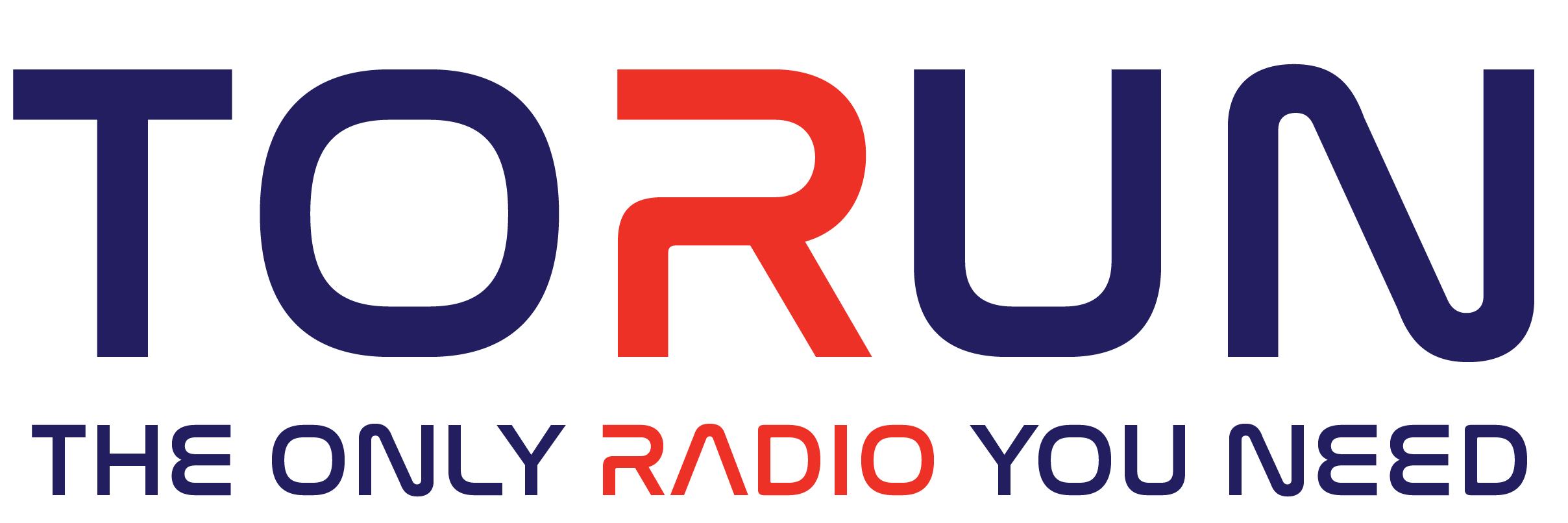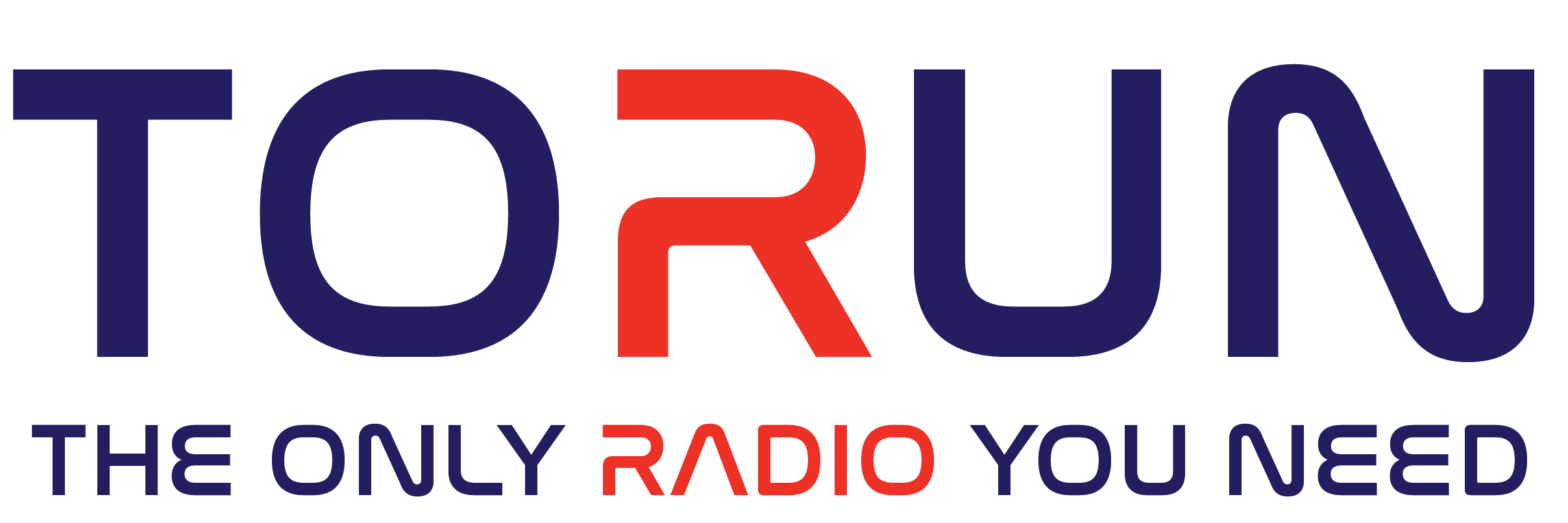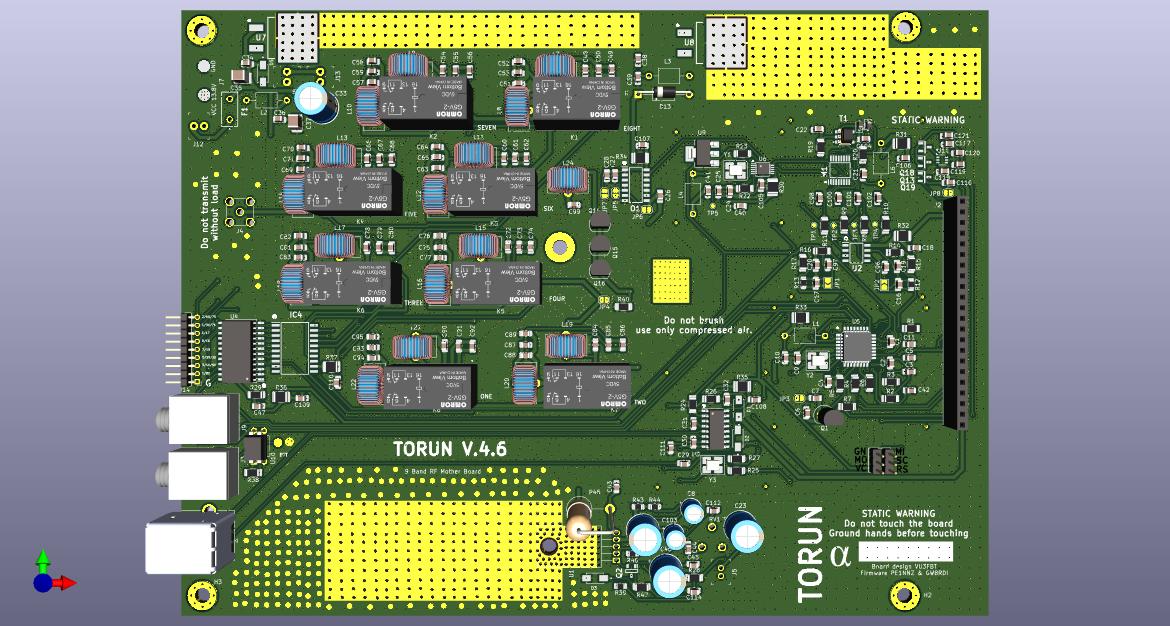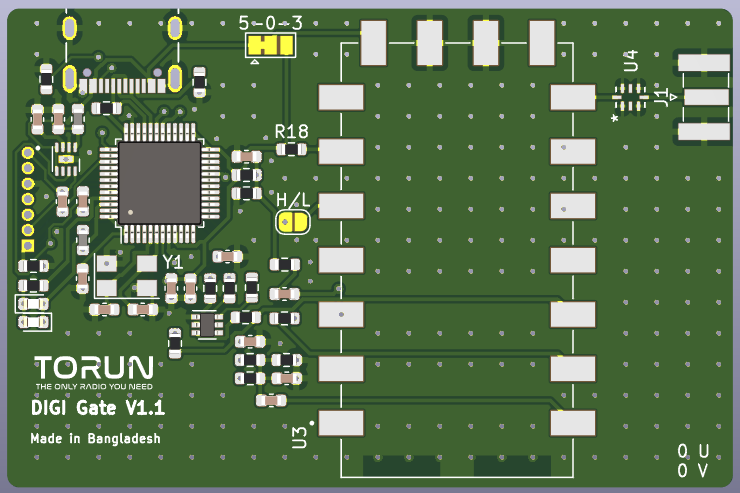The Design of TORUN: A Modern Class-E Driven SSB and CW SDR Transceiver
The TORUN SDR transceiver represents a fresh, innovative approach to radio communication design, combining power efficiency, digital flexibility, and compactness. Initially adapted from the uSDX project by PE1NNZ, TORUN is designed for Single Sideband (SSB) and Continuous Wave (CW) communication, with the capability to handle popular digital modes such as FT8, JS8, and FT4. Its standout feature is the software-driven Class-E power amplifier design, making it ideal for both amateur and commercial applications.
Class-E Efficiency Meets SDR Innovation
At the heart of TORUN's transceiver design is a Class-E power amplifier. Class-E amplifiers are known for their efficiency, reducing heat and power loss. This design decision allows TORUN to deliver an impressive 20-70W peak envelope power (PEP) in SSB mode, with higher output on the 80m band and reduced output on higher frequencies like 10m. The efficient design also means that for QRP (low power) operation, there’s no need for bulky heat sinks or complex, power-hungry linear amplifiers. The simplicity and cost-effectiveness of this design make TORUN stand out in a market often filled with heavier, more complicated transceivers.
Digital Signal Processing (DSP) at the Core
TORUN leverages the ATMEGA328P microcontroller to perform most of the transceiver’s operations digitally. This includes the generation of SSB signals, using innovative methods such as phase modulation. By controlling the SI5351 PLL phase via I2C communication at 800kbit/s, the ATMEGA328P digitally samples input audio and reconstructs SSB signals. The PA power is managed through Pulse Width Modulation (PWM) on the key-shaping circuit, allowing for a highly efficient, software-based SSB signal.
On the receiving side, digital implementations continue to simplify and improve the design. The 90-degree Hilbert phase shift for I/Q signals, CW/SSB filtering, and audio amplification (now using a class-D amplifier) are all handled by the ATMEGA328P. This shift to a digital approach offers several advantages, such as removing the need for manual I/Q alignment and providing adjustable IF DSP filters, automatic gain control (AGC), and noise-reduction DSP functions. The three built-in attenuators in the analog front end further help to maximize dynamic range, making TORUN versatile enough to handle both weak and strong signal conditions, such as during contests or adjacent to strong broadcast signals on the 40m band.
Audio Excellence with Class-D to Class-A Conversion
One of the most significant upgrades in TORUN’s design is its audio handling. Early prototypes showed that class-D audio amplifiers, while efficient, introduced some distortion. To address this, TORUN’s audio system was upgraded from class-D to class-A operation. This, combined with an integrated audio bandpass filter, delivers crisp, clear audio with up to 10W of output power. The result is a transceiver that produces clean, powerful audio, whether you're working SSB or digital modes.
Features for the Digital Mode Enthusiast
Digital modes are a growing aspect of amateur radio, and TORUN makes this easier by integrating a USB interface with built-in audio capability. This means users can connect the transceiver to a computer with just a single cable, streamlining setup for modes like FT8 or FSK. Additionally, TORUN includes a dedicated 3.5mm I/Q output, allowing operators to take the I/Q data directly to a computer sound card for full-featured FFT analysis and even greater control in digital modes. CAT (Computer Aided Transceiver) control is also supported, making it a highly capable SDR solution for those who enjoy digital experimentation.
Hackability and Future-Proofing
TORUN is designed to be flexible and hackable. With five different QRP Class-E power MOSFET options and an adjustable series resonator, users can tweak and modify the transceiver to their liking. Furthermore, the radio firmware is continuously being upgraded, ensuring that TORUN stays up to date with modern features and improvements. Firmware updates can be easily installed via the USB port, adding to the transceiver’s adaptability.
The optional 70W power amplifier is another exciting feature for those seeking higher output. This PA board uses a 4-layer design with an auto-selectable low pass filter and SWR sensing to protect the amplifier from mismatch issues. It’s also hackable, allowing users to experiment with various low-cost MOSFETs.
Clean Signal Path and Noise Management
To ensure a clean signal path and reduce internal noise, TORUN's component layout has been carefully optimized. This meticulous design process has minimized noise in the final version, offering users a better experience when operating in noisy environments or with weak signals.
Conclusion
TORUN exemplifies the future of modern SDR transceivers by fusing digital signal processing with a highly efficient Class-E power amplifier. It offers a compact, hackable, and power-efficient platform for SSB, CW, and digital mode operations, making it a fantastic choice for both beginners and seasoned radio operators. With ongoing firmware upgrades, low-cost modifications, and careful design, TORUN is not just a transceiver but a flexible platform for radio enthusiasts to explore, experiment, and enjoy for years to come.







